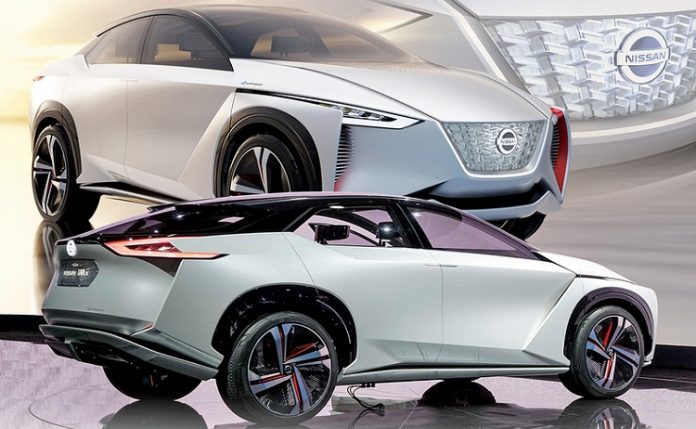The EV, expected to arrive in the U.S. in the second half of 2021, would be one of eight battery-powered models Nissan is planning globally in the next few years.
At a dealer meeting last month, Nissan gave its U.S. retailers their first look at the EV, which is being developed on a new platform.
Analysts believe the electric crossover segment is likely to keep growing for the next few years.
Sam Abuelsamid, an analyst at Navigant Research, said a crossover EV is the right move for Nissan.
“The market is more likely to want an electric crossover in 2021 than it is in 2019,” Abuelsamid said.
Squandered lead
With a 300-mile range, the planned vehicle would be competitive in the nonpremium EV market, said Ed Kim, an analyst with AutoPacific.
“The importance of range among EV buyers cannot be overstated,” Kim said. “Range is one of the top reasons people reject electric vehicles.”
With a 300-mile range at a “mainstream price point,” Nissan’s EV will be competitive with Ford’s upcoming Mustang-inspired crossover and Tesla’s Model Y, Kim said.
Nissan was first to market a battery-powered vehicle with its Leaf hatchback in 2010. But critics say the automaker squandered its lead by failing to update the vehicle’s powertrain and design quickly and aggressively enough.
The Leaf, while promoted as a feasible family car, was hobbled by a range of less than 100 miles in its early years. Not until this year did Nissan deliver a Leaf with a competitive 226-mile range.
Abuelsamid said that by 2015, the compact hatchback segment was shrinking. “They should have had some alternative body style — even based on the same platform — to offer to consumers.”
The new crossover is loosely based on the IMx concept that Nissan unveiled at the 2017 Tokyo auto show. A closer-to-production concept is expected to be shown next month at the Tokyo show.
The specifics of its battery capacity were not disclosed at the dealer meeting. Based on the range, the crossover could have a 75 to 85 kilowatt-hour battery.
One dealer who saw the vehicle told Automotive News that it has a roomy passenger cabin, with a “futuristic” look that is “like nothing on the market.”
The cockpit features a digital dashboard that stays hidden until the vehicle is turned on.
“When you get in the car, all you see is a pulsating start button,” a dealer said. Pushing the start button brings the high-resolution display to life.
The design reflects an industry trend to use touch-sensitive buttons in place of traditional dials and knobs. Like the new Porsche Taycan and Tesla Model 3, the Nissan crossover has a dashboard devoid of physical buttons.
The production version of the crossover has a shorter hood than the IMx concept, dealers said.
The crossover should receive the next generation of Nissan’s ProPilot semi-autonomous driving technology. The new iteration, available first in Japan, promises no-hands, auto-navigating highway driving from on-ramp to off-ramp, with the ability to automatically pass cars along the way. The 2.0 version makes advances over the first-generation ProPilot, which doesn’t allow for hands-free driving or take orders from the navigation system to drive to a destination.




